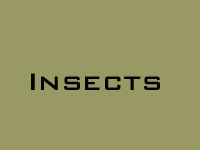
 |
 |
Aphids or Plantlice
Family Aphididae

Pea aphid (Acyrthosiphon pisum). Photo:Stephanie Boucher
Immatures and adults are phytophagous and are often found in large numbers sucking sap from the stems or leaves of various vegetable plants and fruit trees. They can be serious pest species of cultivated plants, and they also serve as vectors of plant diseases. Aphids secrete a defensive fluid from their cornicles. They also secrete honeydew from the anus, which consists of excess sap, sugars and waste material ingested by the insect. When produced in large quantities it causes the surface of objects to become sticky, and it also attract ants in large numbers. Many aphids have an unusual life cycle. Wingless females produce several generations of wingless young through parthenogenesis (they do not require males for mating) for most of the summer. Later in the season the females start to produce winged young that include both males and females. The winged aphids can mate and fly off to colonize new areas. Aphididae are small, soft-bodied insects with a characteristic pear-like shape. They have long antennae and a pair of cornicles at the posterior end of the abdomen. The cornicles are tube-like structures arising from the fifth or sixth abdominal segment. Most aphids are wingless but winged forms have four wings, with the front wings larger than the hind wings. The wings at rest are held vertically above the body.
